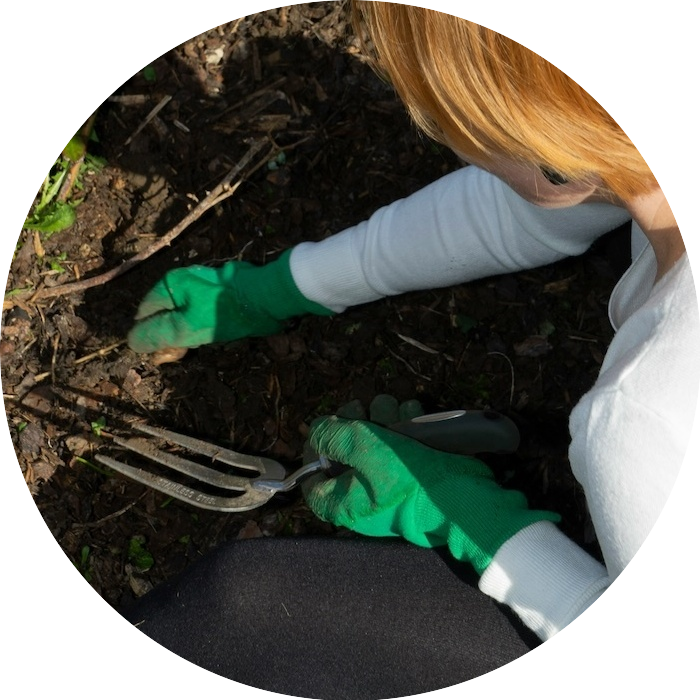Rain barrels, soaker hoses, root feeders, healthy soil, weeding. What do all of these have in common? They help us save water.
Water is unarguably the most important natural resource we have. Without water life as we know it simply cannot be. All living things require this precious resource and that includes plants. So, the question is – How do we maintain our gardens and keep them healthy utilizing this resource to not be wasteful? The answer is by making a few, meaningful changes in our approach to watering our plants.
Planting and growing veggies and annual flowers
During water restrictions we often get concerned about watering our gardens, especially our tender annual flowers and veggies, especially our tomatoes. The good news is that only in the rarest cases of extreme drought is this a concern. In 2023 the City of Calgary only went to Stage 1 of their 4 stage water restrictions, this did not limit us in the slightest in how we water our plants. Personally, I will be growing the same things this year, and I’m already excited to get started.


Rain barrels and gathering water
One of the most instantly recognizable gardening items to help with water wise gardening is the rain barrel. The rain barrel gathers rainwater directly from your downspout. These water storing units are a phenomenal way to capture over 900 gallons of water yearly. Most have a spigot attached so you can easily hook up a soaker hose or fill your watering can. With the added bonus of rainwater being free, so saving you money, and better for your plants these truly are a win/win/win. Conserving water, saving money, helping your plants, what more do you need.
Root feeders,soaker hoses, watering cans and utilizing water
Once we have gathered the water how do we use it to maximize efficiency? The best way we can achieve this is the delivery method. Root feeders are an incredible way to deliver water direct to the roots without needing to percolate through fabric and mulch and soil. This ensures the roots are saturated to their needs using less water than traditional methods. Soaker hoses are also an excellent way to deliver water. Especially if they are laid under mulches and fabrics. These slow, drip feeders slowly saturate the soil allowing the roots even access to the water. Finally watering cans, whilst they may be the least efficient out of these 3 methods they are still far better than a sprinkler or a hose nozzle. Watering cans are more accurate in where they deliver the water, and you can be more accurate how much water is being delivered.


Healthy soil
Amending our soil through the season, especially in the spring, massively benefits our plants, but does it also help with saving water? The answer is yes. A healthy, living soil helps conserve and utilize water in a few different ways. Healthy soil contains earth worms, composting/decaying matter and loads of microbial activity. All of these serve to make “pockets” in your soil that allows water to be stored there and used throughout the day as your plants actively seek water. Secondly is absorption and holding. A poor soil often has water pool on it, it is almost hydrophobic, or water drains straight through it. A soil’s ability to absorb and retain moisture ensures a little water goes a long way.
Fabrics and mulch
Fabrics and mulches, when used properly, can really up your game in water conservation. By placing soaker hoses under them or using root feeders you have insulated your now damp soil from drying out in the sun and wind. They also work the same way with rain. After a saturating downpour these tools hold the moisture in. They also help weed control, weeds are a water thief and need to be controlled. However, it should be noted having mulches and fabric in your garden beds can inhibit water use when using traditional methods, as you need to apply more water to soak through them.


Weeding
Ahhh, weeding, everyone’s favourite garden chore… Just kidding, we know you all hate it. However weeding is an essential job. One of the reasons weeds are such successful plants is their ability to rob water and nutrients from other plants. Keeping your garden beds weed-free allows the moisture to go to the plants you have selected, not the opportunistic weeds.
Trees and perennials
Of course, no garden is a garden without our beloved plants. Fortunately, mother nature is resilient, and plants have evolved over millennia to be able to survive in all kinds of conditions. This is true of drought conditions too. Whilst every new tree and perennial will need adequate water to establish themselves after this a lot of drought hardy plants can survive, and even thrive, just on what the get from nature. Just because there are water restrictions, or drought conditions is no reason we can’t enjoy our gardens.



